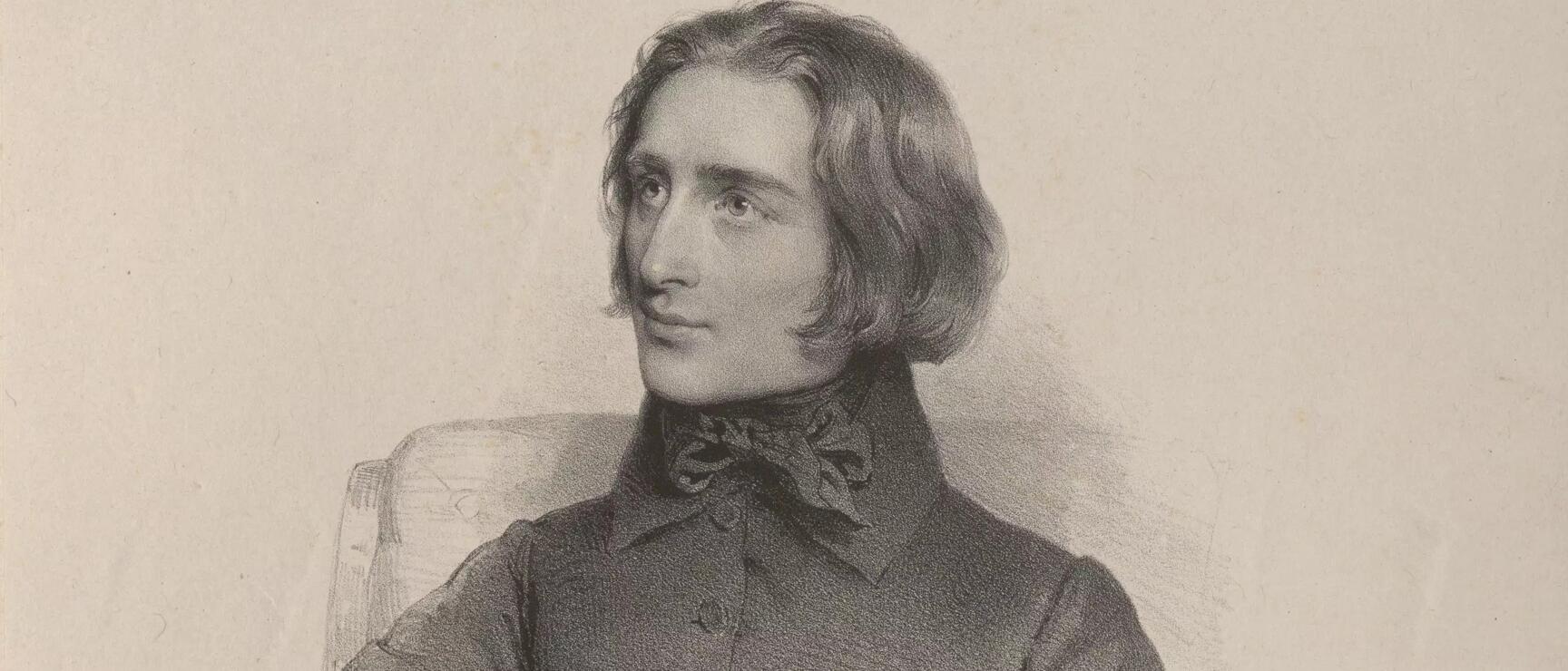
Franz Liszt
About the life of an exceptional musician
Born in Raiding, in today’s Burgenland – which at the time was part of the Kingdom of Hungary – as the son of a musician employed by Prince Esterházy, Franz Liszt received support from an early age. He gave his first public performance at the age of nine and, by twelve, was studying with Carl Czerny and Antonio Salieri in Vienna. Shortly afterwards, he was celebrated in Paris as “le petit Litz” – a child prodigy with remarkable stage presence.
Liszt became the superstar of the 19th century. His expressive playing, charismatic stage presence and technical brilliance helped shape the modern concert scene. As a composer, Liszt was a pioneer: through symphonic poems, virtuosic études, sacred music and orchestral works, he continually explored new possibilities in musical art. His boundless creativity is reflected in over 800 works, including the Hungarian Rhapsodies, Piano Concerto No. 1, literature-inspired pieces such as the Faust Symphony and the Dante Symphony, and an extensive collection of late sacred music.
Liszt was not only musically innovative but also a culturally engaged, multilingual and deeply spiritual person. He read philosophy, corresponded with writers such as Victor Hugo, George Sand and Heinrich Heine, and often considered becoming a priest. From 1865 onwards, he appeared as an abbé dressed in black and increasingly focused on church music, including the Hungarian Coronation Mass.
His eventful life took him to Vienna, Paris, Geneva, Weimar, Rome and Budapest. Beyond music, his personal life was intense – marked by affairs, scandals, travels, illnesses, and upheavals, but also by deep friendships.
Franz Liszt died in 1886 in Bayreuth from pneumonia. He left behind far more than a musical legacy: Liszt was an extraordinary figure – as an artist, thinker and person. A visionary who not only revolutionised piano music but also shaped Europe’s musical life to this day.
Franz Liszt is regarded as a musical prodigy: he began playing the piano at the age of six and gave his first public concert at nine.
Meet Franz Liszt
In the footsteps of Franz Liszt
Co-founder of the musical movement
The New German School
The New German School was a movement that promoted musical progress, innovation and the combination of music with non-musical themes. It emerged around 1850, centred on Franz Liszt in Weimar, and was shaped by composers such as Richard Wagner and Hector Berlioz. The term was introduced by music writer Franz Brendel to describe “music of the future” as a new era following Beethoven.
The first popstar
Lisztomania
The term describes a 19th-century phenomenon that made Franz Liszt the first pop star in music history. Lisztomania was coined in 1844 by Heinrich Heine, who used it to describe the audience’s ecstatic enthusiasm: women stormed the stage, collected locks of Liszt’s hair and fainted.
Lisztomania was much more than simple admiration – it was mass euphoria, media hype and a sign of cultural change. With wild hair, dramatic gestures and carefully staged concerts, Liszt revolutionised the concert scene.
Merchandise, overcrowded halls and enthusiastic press coverage made him a model for later idols – from Beatlemania to today’s pop culture. Liszt himself viewed the hysteria critically and called it “pathological.”
Fun facts about Franz Liszt
Reinterpreted and staged
Liszts favourite food
Ceramic artist Mia Kostyan has created three elegant ceramic plates for the favourite dish of composer and piano virtuoso Franz Liszt: calf’s head, brain and salad. The culinary interpretation comes from top chef Alain Weissgerber of the restaurant taubenkobel.